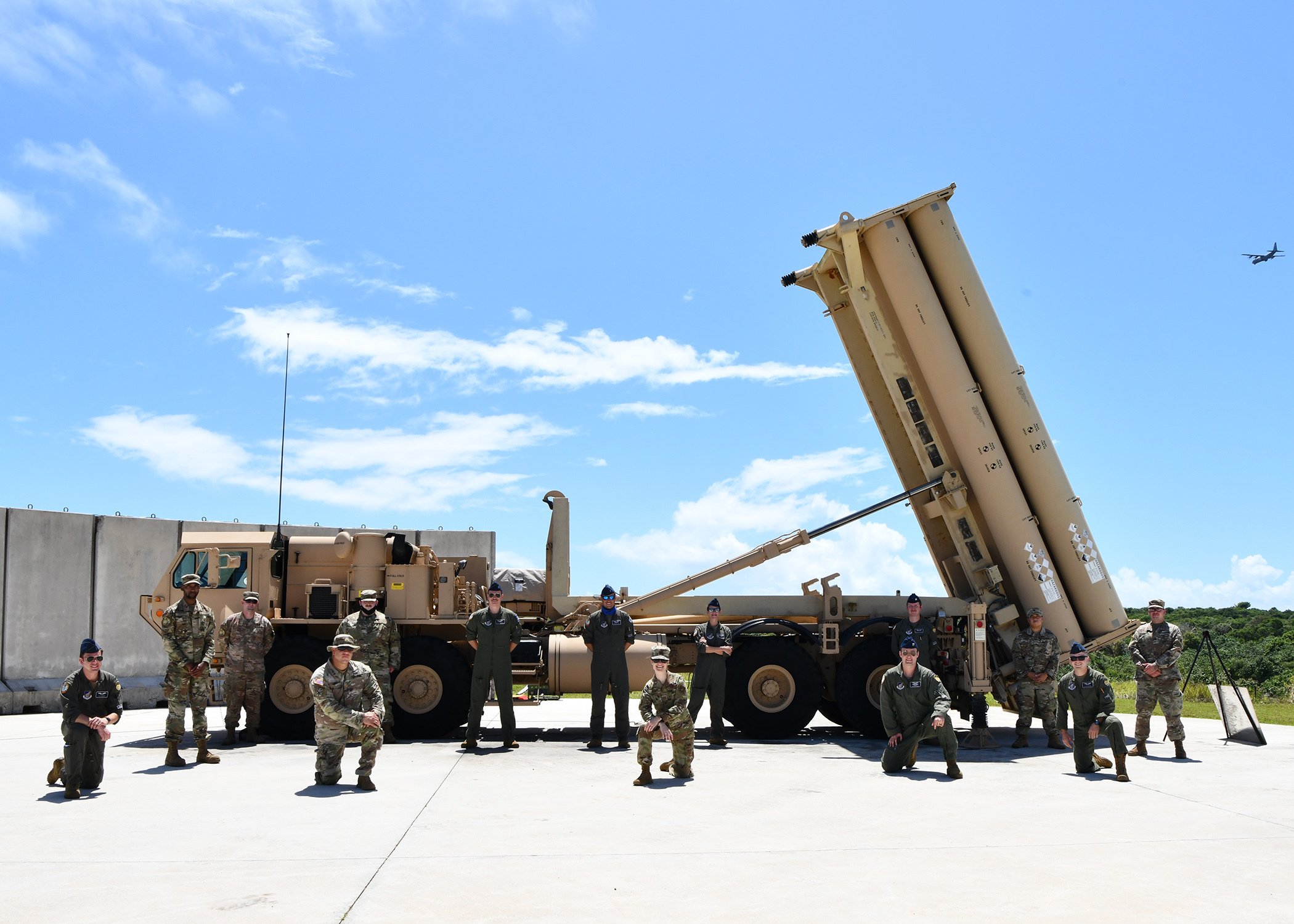In the ever-evolving landscape of global defense systems, THAAD stands out as a cutting-edge missile defense solution. The Terminal High Altitude Area Defense system, developed by Lockheed Martin for the US Army, has gained significant attention for its advanced capabilities in intercepting ballistic missiles.
As tensions rise in various parts of the world, understanding the intricacies of this sophisticated defense mechanism has become crucial for military strategists and defense enthusiasts alike.
This article delves into the specifics of the THAAD missile system, exploring its strategic importance in modern warfare. We’ll examine the technical aspects that make THAAD one of the best missile defense systems available today.
Additionally, we’ll look at its performance in real-world scenarios and discuss the impact it has on global security dynamics. By the end, readers will have a comprehensive grasp of this pivotal defense technology and its role in shaping military strategies worldwide.
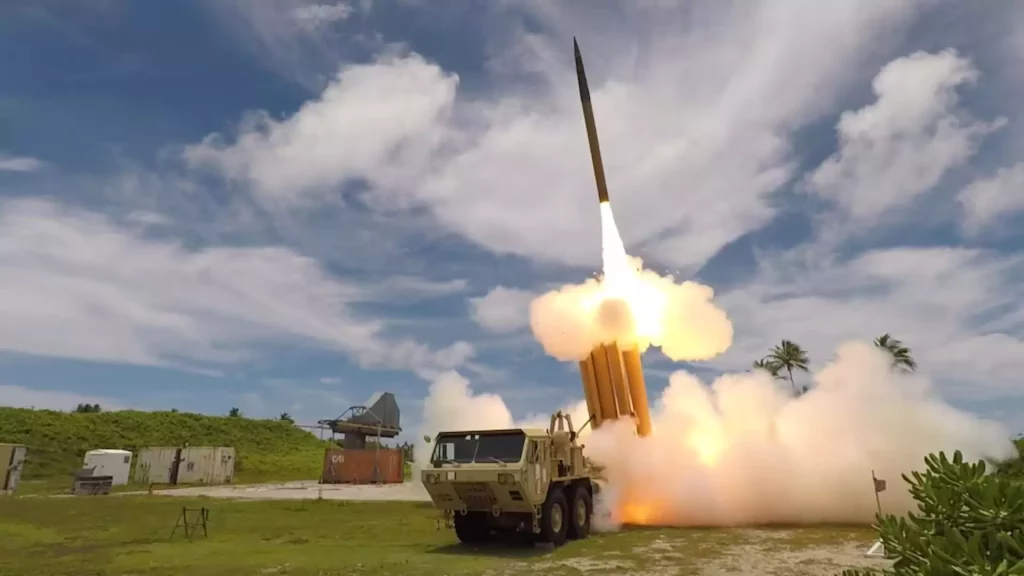
What is THAAD?
THAAD, which stands for Terminal High Altitude Area Defense, is an advanced missile defense system developed by Lockheed Martin for the US Army. This sophisticated system is designed to intercept and destroy short-, medium-, and intermediate-range ballistic missiles during their terminal phase of flight.
THAAD has gained recognition as one of the best missile defense systems available today, offering a crucial layer of protection against various missile threats.
Originally known as Theater High Altitude Area Defense, THAAD was initially conceived to counter Scud missiles and similar armaments. The system has evolved significantly since its inception, with its first deployment taking place in May 2008, earlier than the originally scheduled 2012 deployment date.
Today, THAAD has been deployed in several strategic locations worldwide, including Guam, the United Arab Emirates, Israel, Romania, and South Korea.
Key Components
The THAAD system consists of four primary components that work together to detect, track, and neutralize incoming missile threats:
- Interceptors: These are the missiles designed to destroy incoming threats. THAAD interceptors are 6.2 meters long, 0.4 meters in diameter, and weigh 662 kg at launch. They utilize a single-stage, solid-propellant booster and a liquid-fueled kinetic kill vehicle.
- Launchers: THAAD employs mobile, truck-mounted launchers that can carry up to eight interceptors each. A typical THAAD battery includes six launchers, providing a total capacity of 48 interceptors. These launchers can be rapidly reloaded in under 30 minutes during combat operations.
- Radar: The system uses the powerful AN/TPY-2 radar, developed by Raytheon. This X-band active electronically scanned array radar can detect and track incoming missile threats from distances of up to 3,000 kilometers. It provides real-time data to the fire control and launcher systems for precise targeting.
- Fire Control and Communications Unit: This component coordinates the entire operation, integrating radar data with the launchers and managing the intercept process. It also enables seamless integration with other US missile defense systems, such as Patriot and Aegis.
How THAAD Works
THAAD’s primary mission is to intercept ballistic missiles during their final stage of flight, just before they re-enter or while they are inside the atmosphere. This capability allows THAAD to defend against threats with a range of up to 200 kilometers.
The system can engage targets at altitudes of up to 150 kilometers, significantly reducing the risk of damage on the ground.
Unlike traditional missile defense systems that use explosive warheads, THAAD employs a unique “hit-to-kill” approach. The interceptor does not carry a warhead; instead, it relies on the kinetic energy of impact to destroy the incoming missile. This method offers several advantages:
- It reduces the risk of explosion from conventional warhead ballistic missiles.
- Nuclear-tipped ballistic missiles do not detonate upon impact.
- It provides a high level of precision in neutralizing threats.
However, it’s important to note that biological or chemical warheads could potentially disintegrate upon impact, posing a risk of environmental contamination.
Interceptor Capabilities
THAAD interceptors are designed to engage ballistic missiles during their terminal phase of flight, both inside the Earth’s atmosphere (endoatmospheric) and outside it (exoatmospheric). This dual-capability sets THAAD apart from many other missile defense systems and provides a critical layer of defense, especially against missiles carrying weapons of mass destruction.
The interceptor consists of a carbon fiber booster with a hydroxyl-terminated polybutadiene (HTPB) propellant. It employs a thrust vector system for control and a deployable rear flare for stability.
The kill vehicle, constructed from composites, uses a gimbaled infrared seeker to track targets in the terminal phase. After the main booster brings it close to the target, the kill vehicle separates and uses hydrazine-powered divert thrusters to maneuver for the final intercept.
THAAD’s mobility is another key feature, allowing it to be deployed anywhere on short notice. This flexibility enables the system to adapt to emerging threats across the globe, making it an invaluable asset in the US Army’s missile defense strategy.
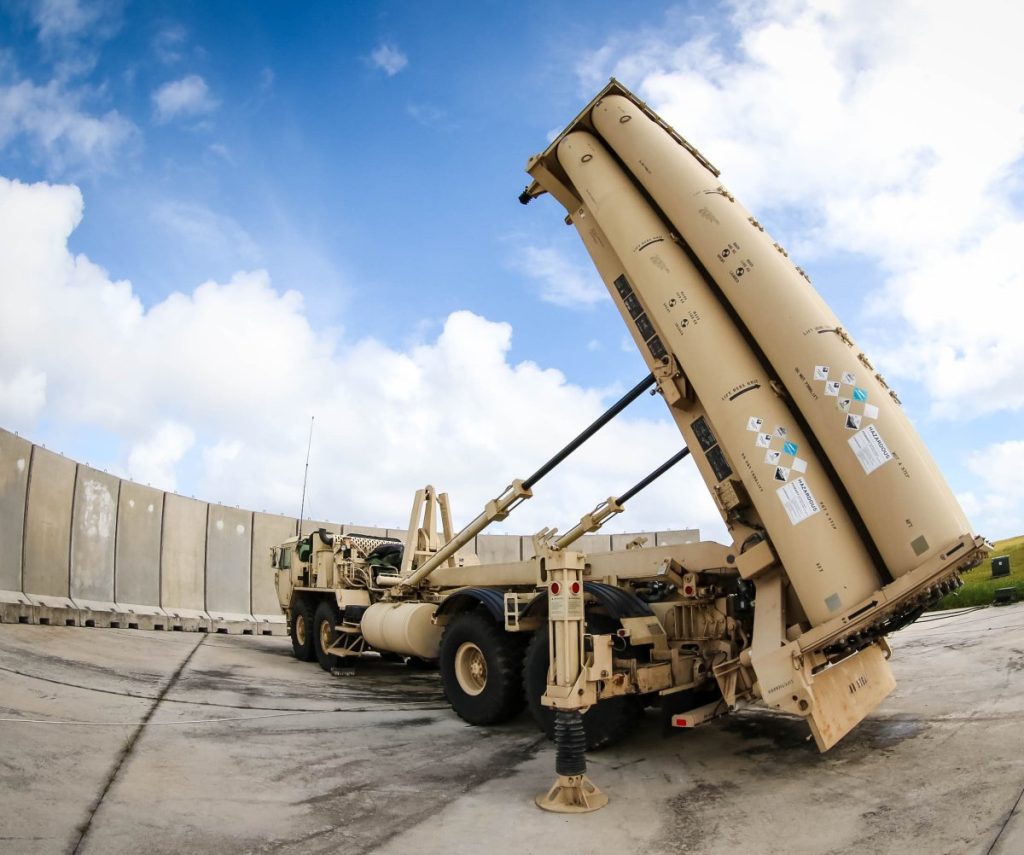
THAAD’s Strategic Importance
The Terminal High Altitude Area Defense (THAAD) system has a significant influence on global security dynamics. Its advanced capabilities and strategic deployments have an impact on geopolitical relationships and military strategies worldwide.
Global Deployments
THAAD has been deployed in various strategic locations across the globe, demonstrating its importance in modern missile defense strategies. The United States has positioned THAAD batteries in several countries to protect against potential missile threats.
In the Middle East, THAAD has been deployed in the United Arab Emirates and Israel. The system in the UAE made history on January 17, 2022, when it successfully intercepted a hostile medium-range ballistic missile, marking its first operational interception. In Israel, THAAD has been integrated into the country’s existing missile defense network, enhancing its capabilities against regional threats.
Europe has also seen THAAD deployments. In 2019, a THAAD battery was temporarily stationed in Romania at NSF Deveselu while the Aegis Ashore system underwent upgrades. This deployment highlighted the system’s flexibility and its role in NATO’s missile defense architecture.
In the Asia-Pacific region, THAAD has been a crucial component of the US military’s strategy to counter North Korean missile threats. The system has been deployed to Guam to protect the island from potential attacks.
In South Korea, the deployment of THAAD in 2016 was a response to North Korea’s ballistic missile and nuclear tests, significantly altering the regional security landscape.
Deterrence Value
THAAD’s presence has a substantial deterrence value, serving as a powerful tool to discourage potential adversaries from launching missile attacks. The system’s advanced capabilities, including its ability to intercept short-, medium-, and intermediate-range ballistic missiles, make it a formidable defensive asset.
The deployment of THAAD to various locations has demonstrated the United States’ commitment to protecting its allies and interests worldwide.
For instance, the US decision to send THAAD to South Korea in response to North Korean provocations sent a clear message about the strength of the US-South Korea alliance and the consequences of aggressive actions.
THAAD’s deterrence value extends beyond its immediate operational capabilities. The system’s presence in a region can have a stabilizing effect, as potential aggressors must factor in the increased risk and reduced effectiveness of their missile arsenals when considering hostile actions.
Geopolitical Implications
While THAAD has enhanced the defensive capabilities of its host nations, its deployments have also had significant geopolitical implications. The system’s advanced radar and interceptor capabilities have raised concerns among some nations, particularly China, about potential shifts in regional power balances.
The deployment of THAAD to South Korea in 2016 caused considerable tension between South Korea and China. Beijing expressed strong opposition to the system, arguing that its powerful radar could be used to monitor Chinese military activities.
This disagreement had an impact on diplomatic and economic relations between the two countries, highlighting the complex interplay between military technology and international relations.
Similarly, discussions about potential THAAD deployments in Japan have been closely watched by regional powers. The Japanese government has considered hosting THAAD to bolster its defenses against North Korean missiles, but such a move would likely have repercussions for Japan’s relationships with China and Russia.
The US has also explored the possibility of deploying THAAD to other regions, including Europe and the Middle East. These potential deployments are carefully considered in the context of regional security dynamics and diplomatic relationships.
In conclusion, THAAD’s strategic importance extends far beyond its technical capabilities. Its global deployments, deterrence value, and geopolitical implications make it a crucial element in modern missile defense strategies and international security calculations. As missile threats continue to evolve, THAAD’s role in shaping global security dynamics is likely to remain significant.
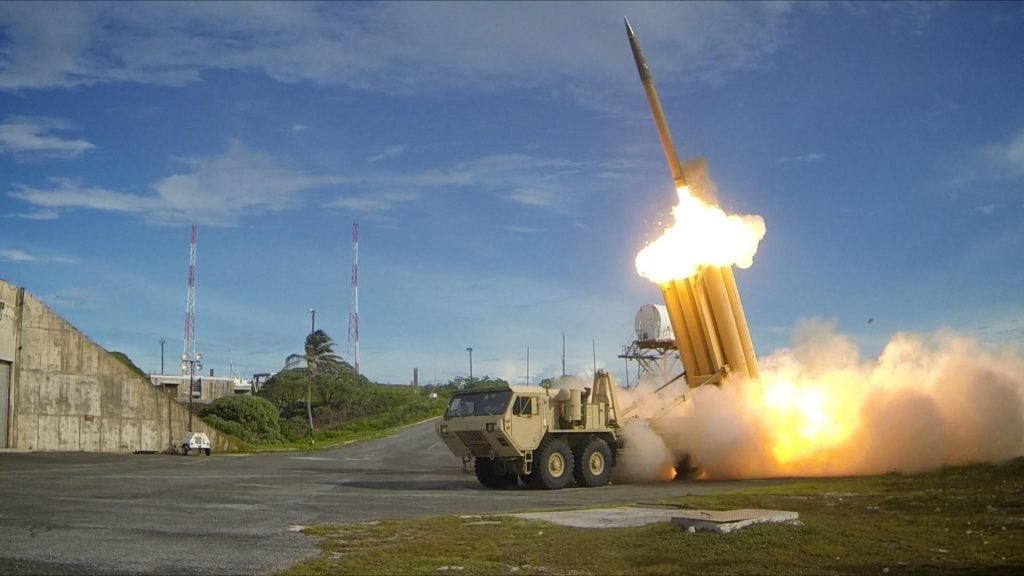
Technical Specifications and Performance
The Terminal High Altitude Area Defense (THAAD) system stands out as one of the best missile defense systems available today, thanks to its advanced technical specifications and impressive performance. This section delves into the key components that make THAAD a formidable defense against short-, medium-, and intermediate-range ballistic missiles.
Radar System
At the heart of THAAD’s effectiveness is its powerful radar system, the Army Navy/Transportable Radar Surveillance (AN/TPY-2). This X-band active electronically scanned array radar, developed by Raytheon, has a significant influence on the system’s accuracy and range. The AN/TPY-2 can operate in two modes:
- Forward-based mode: In this configuration, the radar can detect and track targets at distances of up to 3,000 kilometers, providing early warning and cueing for other Ballistic Missile Defense System (BMDS) elements.
- Terminal mode: Here, the radar is aimed upward to acquire targets during their descent, supplying crucial targeting information to the THAAD fire control and launcher systems.
The AN/TPY-2 radar consists of four major subsystems: the Antenna Equipment Unit (AEU), Electronic Equipment Unit (EEU), Cooling Equipment Unit (CEU), and Prime Power Unit (PPU). The AEU, the main radiating element, has a 9.2 square meter phased-array antenna face with over 25,000 antenna modules, enabling high-resolution target discrimination and engagement cueing.
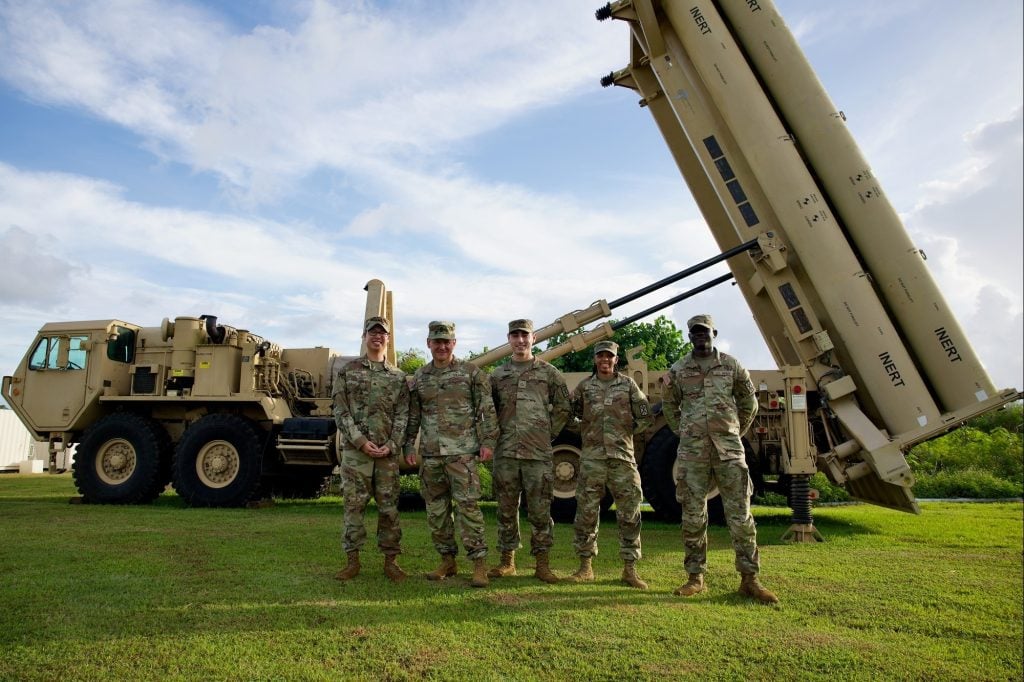
Interceptor Missiles
THAAD employs a unique “hit-to-kill” approach, using kinetic energy to destroy incoming threats rather than explosive warheads. This method has an impact on the system’s effectiveness against various types of ballistic missiles, including those potentially carrying weapons of mass destruction.
Key specifications of the THAAD interceptor include:
- Length: 6.2 meters
- Diameter: 0.4 meters
- Launch weight: 662 kg
- Components: Single-stage, solid-propellant booster and a liquid-fueled kinetic kill vehicle
- Range: Capable of engaging targets at distances of 150-200 kilometers
- Altitude: Can intercept threats at altitudes up to 150 kilometers, both inside and outside the Earth’s atmosphere
The interceptor’s booster is constructed from carbon fiber and uses a hydroxyl-terminated polybutadiene (HTPB) propellant. It employs a thrust vector system for control and a deployable rear flare for stability. The kill vehicle, made from composites, uses a gimbaled infrared seeker to track targets in the terminal phase and hydrazine-powered divert thrusters for final maneuvers.
Launch Vehicles
THAAD’s mobility and rapid deployment capabilities have a significant influence on its strategic value. The system uses truck-mounted launchers based on a 4-axle heavy expanded mobility tactical truck (HEMTT). Each launcher has the capacity to carry up to eight interceptors, which are housed in 6.6-meter-long, 1,044 kg launch canisters.
A typical THAAD battery consists of six launchers, providing a total capacity of 48 interceptors. This configuration allows for a substantial defensive capability against multiple incoming threats. The launchers can be rapidly reloaded in under 30 minutes during combat operations, enhancing the system’s sustained engagement capabilities.
THAAD’s performance in testing has been impressive, with production models never failing to intercept incoming targets. The system has demonstrated its ability to engage multiple threats simultaneously, as evidenced by its successful interception of a medium-range ballistic missile target while engaging debris from a second target during an operational test.
As THAAD continues to evolve, ongoing developments aim to enhance its performance in high-debris environments, improve discrimination algorithms, and better coordinate engagements with other missile defense systems like Patriot and Aegis BMD. These advancements will further solidify THAAD’s position as a crucial component of global missile defense strategies.
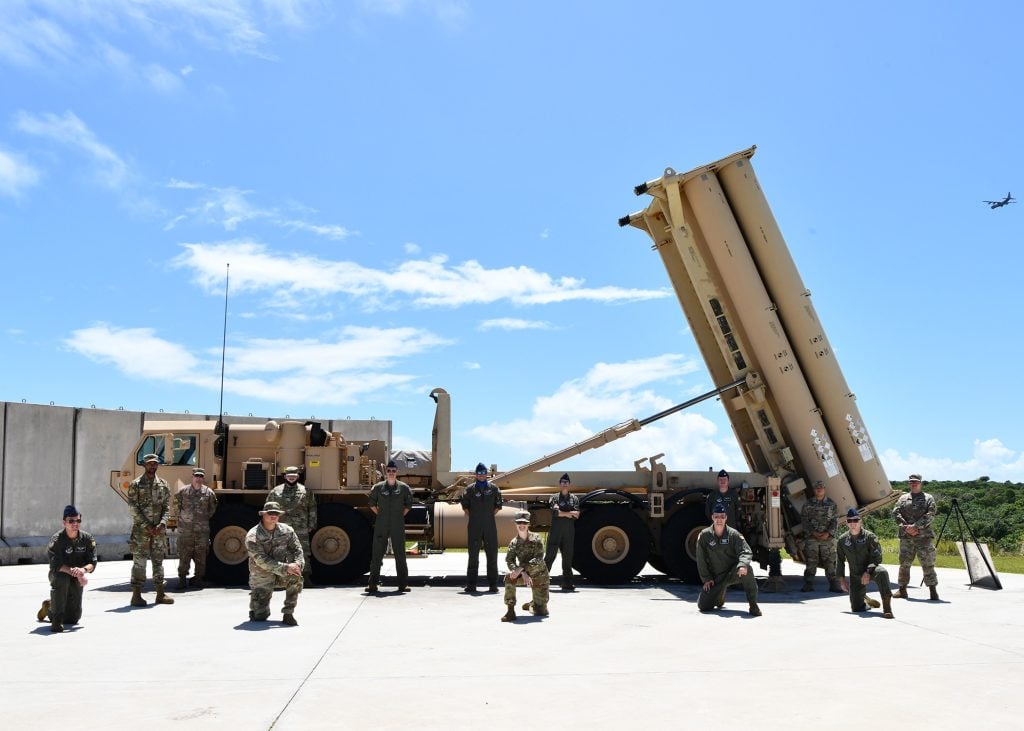
The THAAD missile defense system has proven to be a game-changer in modern warfare strategies. Its advanced radar technology, precise interceptor capabilities, and strategic deployments worldwide have a significant impact on global security dynamics. What’s more, THAAD’s ability to neutralize various types of ballistic missiles, both inside and outside the Earth’s atmosphere, makes it an essential component in protecting nations against evolving missile threats.
As missile technology continues to advance, THAAD’s role in shaping military strategies and international relations is likely to grow. Its presence not only enhances the defensive capabilities of host nations but also serves as a powerful deterrent against potential aggressors. To wrap up, while THAAD’s deployments may sometimes lead to geopolitical tensions, its overall contribution to global security and stability cannot be overstated, cementing its position as a crucial element in modern missile defense strategies.
FAQs
What is the effectiveness of the THAAD missile defense system?
The THAAD (Terminal High Altitude Area Defense) system is a highly effective anti-missile weapon used by the US military. It is capable of intercepting ballistic missiles within a range of 150 to 200 kilometers (93 to 124 miles) and has demonstrated a near-perfect success rate during testing scenarios.
What is the shortest distance at which THAAD can intercept a missile?
THAAD is effective at intercepting incoming ballistic missiles during their terminal phase at altitudes ranging from 40 to 150 kilometers, with a maximum range capability of up to 200 kilometers.
Which nation developed the THAAD missile system?
The THAAD missile system was developed by the United States. It is designed to intercept and neutralize incoming ballistic missiles at high altitudes, and it can handle short-, medium-, and certain intermediate-range missile threats.

